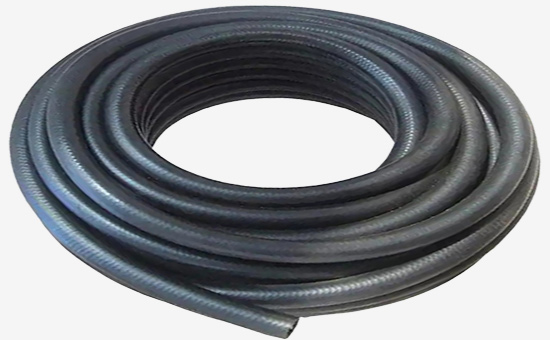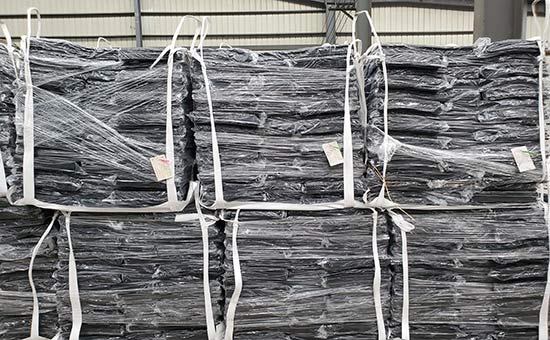
EPDM recycled rubber possesses excellent high and low temperature resistance, ozone resistance, and weather resistance. It can be used alone or combined with EPDM rubber to produce various extruded hoses, effectively reducing raw material costs. When using EPDM recycled rubber or a combination of EPDM rubber/EPDM recycled rubber as the main raw material for producing extruded rubber compounds, appropriately adding polypropylene (PP) granules to the formulation can further enhance the compound's strength, toughness, impact resistance, insulation properties, and aging resistance.
1. Key points for designing formulations for extruded hoses using EPDM recycled rubber/polypropylene blends.
When preparing extruded rubber pipes by blending recycled EPDM with polypropylene, a sulfur vulcanization system is commonly used; as the amount of PP increases, the amount of accelerator in the sulfur vulcanization system (E5LYY523) needs to be appropriately increased to ensure sufficient vulcanization of the recycled EPDM. R-EPDM/PP blend materials can also be vulcanized using organic peroxides or phenolic resin vulcanizers. Blended elastomers vulcanized with sulfur systems or phenolic resin vulcanizers exhibit better elasticity.
The EPDM recycled rubber/PP blend elastomer is reinforced with high-abrasion carbon black such as N330, giving the rubber-plastic elastomer excellent tensile strength, tear resistance, wear resistance, and elasticity. Naphthenic oil has good compatibility with EPDM recycled rubber and polypropylene. Using naphthenic oil to soften the system can effectively improve the processing performance, elasticity, resilience, flexibility, and elongation at break of the R-EPDM/PP blend elastomer.

2. Key Points for Compounding the Formulation of Extruded Rubber Tubes Using Ternary EPDM Reclaimed Rubber/Polypropylene Blends
Ternary EPDM recycled rubber/polypropylene blends are mostly mixed in a Banbury mixer. If necessary, sectional mixing can be used: add the ternary EPDM recycled rubber, polypropylene pellets, carbon black, calcium carbonate, rubber oil, petroleum resin, zinc oxide, stearic acid, and other additives into the Banbury mixer. Control the mixing temperature among 100-110°C and mix for 8-10 minutes; then add sulfur, accelerators, and other additives in an open mill.
Ternary EPDM recycled rubber/polypropylene blends can also be mechanically blended and dynamically vulcanized in a twin-screw extruder, requiring less time.
Premium EPDM recycled rubber, made primarily from high-quality EPDM prime rubber, features physical properties such as resistance to high and low temperatures, aging, high insulation, ozone resistance, and corrosion resistance. Compared with EPDM recycled rubber for sealing strips, it also has advantages like higher rubber content, odorlessness, good elasticity, and smooth, glossy surface of the product. It is an ideal raw material for producing extruded EPDM rubber hoses; using it entirely or partially (up to 70% EPDM recycled rubber) can significantly reduce raw material costs while ensuring the quality of rubber hoses.
Exclusive original article [commercial authorization] reprint, excerpt and excerpt in any form are prohibited without written authorization. Focus on Hongyun rubber: learn the process formula and raw material technology of producing rubber products from recycled rubber to help you reduce costs and increase profits